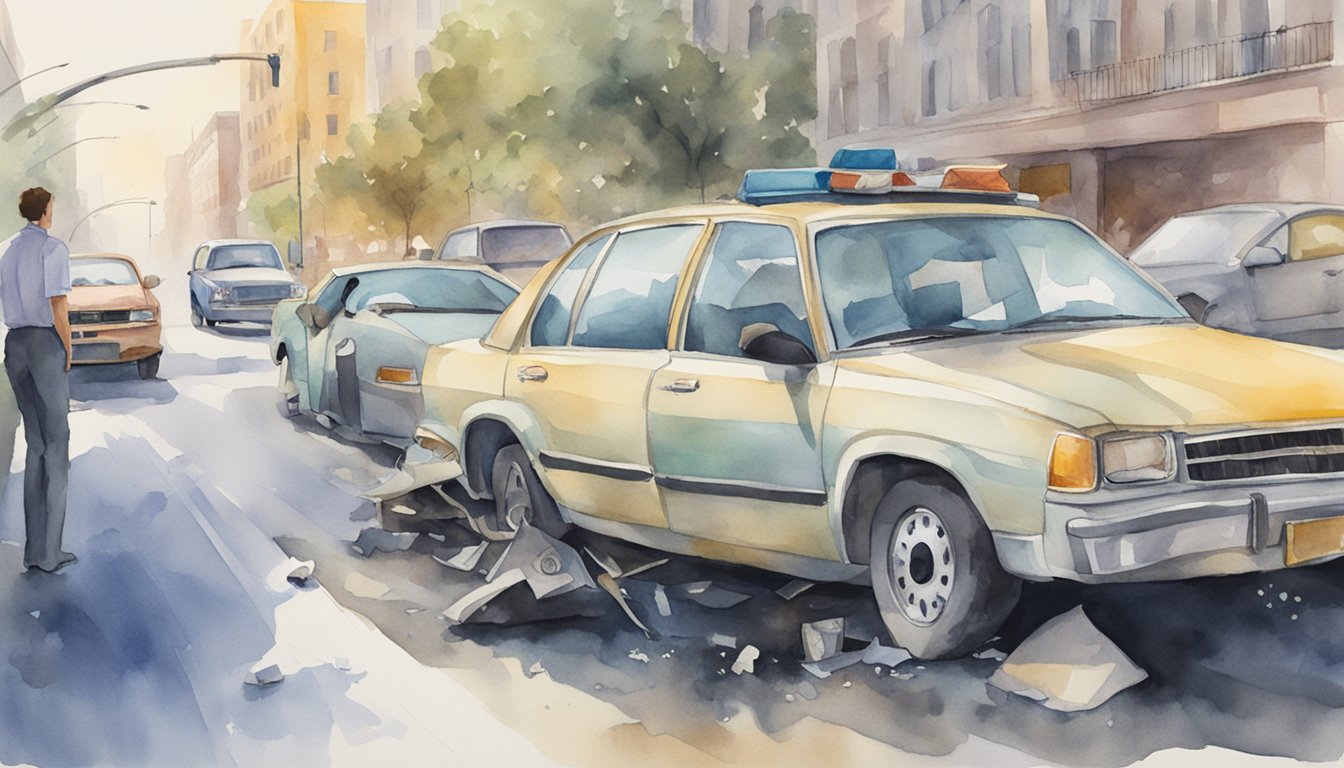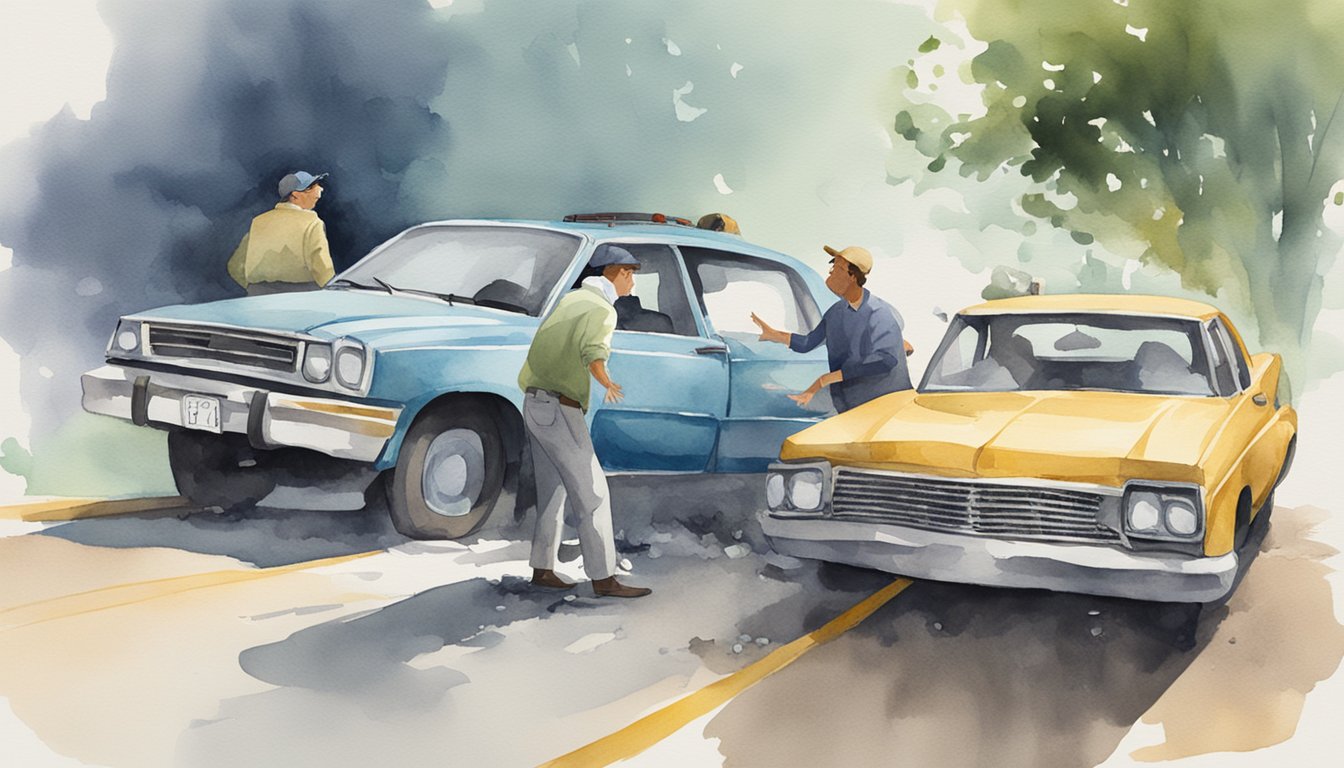Understanding Uninsured Motorist Coverage
Uninsured Motorist (UM) Coverage protects you if you are involved in an accident with a driver who does not have liability insurance.
This kind of insurance can be vital for covering medical expenses and property damage.
Definition and Significance
Uninsured Motorist Coverage is a type of car insurance that provides financial protection if you are hit by an uninsured driver. UM Coverage often includes both uninsured motorist bodily injury (UMBI) and uninsured motorist property damage (UMPD), addressing medical and property-related costs.
The significance of UM Coverage can’t be overstated.
Over 10% of drivers lack adequate liability insurance.
Without UM, victims may struggle with expensive medical bills and vehicle repairs.
An optional but highly recommended addition to your auto insurance policy, many states even make it mandatory.
Interpreting UM in Legal Context
In legal terms, uninsured motorist coverage ensures that you are compensated when another driver is at fault but lacks insurance. UMBI covers injuries sustained by you and your passengers, including medical expenses and lost wages.
Meanwhile, uninsured motorist property damage coverage pays for repair costs to your vehicle.
Legal requirements for UM coverage vary by state.
Some states set minimum coverage levels, while others leave it to the policyholder’s discretion.
Regardless, having a well-defined UM policy can save you from complicated legal battles and financial strain following an accident with an uninsured driver.
UM and UIM (underinsured motorist) coverages are separate but often paired. UIM kicks in if the at-fault driver’s liability limits are too low to cover your damages fully.
Always review your state’s specific insurance requirements and your potential risk exposures.
Consult with your insurance provider to ensure your coverage is adequate for your personal and financial safety.
Implementing Uninsured Motorist Coverage in Practice
You need to know how to apply uninsured motorist coverage in real-world situations.
By examining case studies and identifying challenges, you can better understand its practical use.
Case Studies: Application of Uninsured Motorist Coverage
Imagine you’re in a car accident caused by an uninsured driver.
Your uninsured motorist coverage will kick in to handle medical expenses and vehicle repairs.
One key case involved a driver who suffered bodily injury and filed a claim for medical bills and lost wages.
The coverage helped pay for these costs, showing its value.
In another situation, a hit-and-run accident left a passenger injured.
Since the at-fault driver wasn’t identified, the uninsured motorist coverage provided funds for pain and suffering and necessary health insurance expenses.
These real-life examples highlight how essential this coverage can be for protecting you from financial strain.
Challenges and Solutions
One challenge is recognizing the gaps in your auto insurance policy.
For example, a standard policy may not cover all expenses after an accident with an uninsured driver, leading to high out-of-pocket costs.
It’s crucial to review and understand your coverage limits to ensure they meet your needs.
Implementing uninsured motorist coverage can be complicated when dealing with extensive property damage and medical expenses.
Strategies include thorough documentation and working closely with insurance adjusters.
This ensures a smoother claims process.
Legal hurdles also arise when filing a claim.
Working with an attorney can help navigate the complexities, ensuring that you receive fair compensation for your injuries and other losses.
These solutions aim to maximize the benefits of your uninsured motorist coverage, securing the financial protection you need.
Related Terms to Uninsured Motorist Coverage

Liability Coverage
Liability coverage helps pay for injuries and property damage you cause in an accident.
It is often required by law in states like New Jersey, Minnesota, and Virginia.
Coverage Limits
Coverage limits are the maximum amounts your insurance will pay for a claim.
For example, uninsured motorist coverage might have limits like 100/300, meaning $100,000 per person and $300,000 per accident.
Collision Coverage
Collision coverage pays for damage to your car after an accident with another vehicle or object.
You can learn more about it here.
Uninsured Motorist Insurance
Uninsured motorist insurance covers you if you’re in an accident where the at-fault driver lacks insurance.
This is required in about 20 states, such as Connecticut, Maryland, and South Dakota.
Deductible
A deductible is the amount you pay out of pocket before your insurance pays for a claim.
It’s applicable to various coverage types, including collision and uninsured motorist.
Stacking
Some states allow you to combine or “stack” coverage limits from multiple policies or vehicles, which can increase the amount available if you have multiple cars insured.
State-Specific Rules
Insurance requirements vary by state.
For example, South Carolina mandates uninsured motorist coverage, while New Hampshire does not.
Personal Injury Protection (PIP)
PIP covers medical expenses, regardless of who is at fault.
It’s mandatory in some states, and you can read more about it here.
Medical Payments Coverage
Medical payments coverage, or MedPay, helps cover medical treatment for you and your passengers after an accident, irrespective of fault.
Liability Car Insurance
Liability car insurance is crucial for covering the costs associated with injury or property damage to others in an accident that you cause.
Collision Insurance
Collision insurance helps repair or replace your car if it’s damaged in an accident with another vehicle.
This type of coverage typically requires a deductible.
Some states with unique rules include Oregon, Arizona, and Louisiana.
Understanding the specifics of insurance coverage in each state is crucial when selecting your policy.
Frequently Asked Questions

Uninsured motorist coverage (UM) helps protect you financially if you are in an accident with a driver who does not have insurance.
This section covers the most common questions about how it works and when it is most useful.
What does uninsured motorist coverage typically include?
Uninsured motorist bodily injury (UMBI) pays for medical bills, pain and suffering, lost wages if you can’t work after an accident, and funeral expenses if needed.
It can also cover passengers in your car and family members living with you.
How does uninsured motorist coverage work in an at-fault state?
In at-fault states, the driver who caused the accident is responsible for the damages. Uninsured motorist coverage steps in when the at-fault driver doesn’t have insurance to cover your medical expenses and other related costs.
Are there any disadvantages to declining uninsured motorist coverage?
Declining uninsured motorist coverage can leave you vulnerable.
Without this coverage, you may have to pay out-of-pocket for medical bills and other expenses after an accident with an uninsured driver.
This can lead to significant financial strain.
What factors should be considered when determining the amount of uninsured motorist coverage needed?
Consider your medical costs and income when deciding the coverage amount.
Think about the expenses related to potential injuries and whether your current health insurance is sufficient.
Also, assess the likelihood of encountering uninsured drivers in your area.
In which situations is uninsured motorist coverage beneficial, even if I have collision and comprehensive insurance?
Uninsured motorist coverage is beneficial if an uninsured driver injures you.
While collision and comprehensive insurance cover car repair costs, they do not cover medical bills, pain, suffering, or lost wages.
How does underinsured motorist coverage complement uninsured motorist coverage?
Underinsured motorist coverage protects you if the at-fault driver’s insurance is insufficient to cover your expenses.
It steps in once their policy limits are reached, providing additional help for medical bills, lost wages, and other related costs.
This complements uninsured motorist coverage by filling the gaps when the other driver’s insurance falls short.






